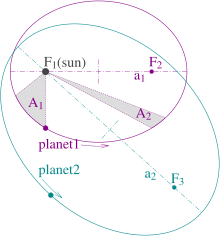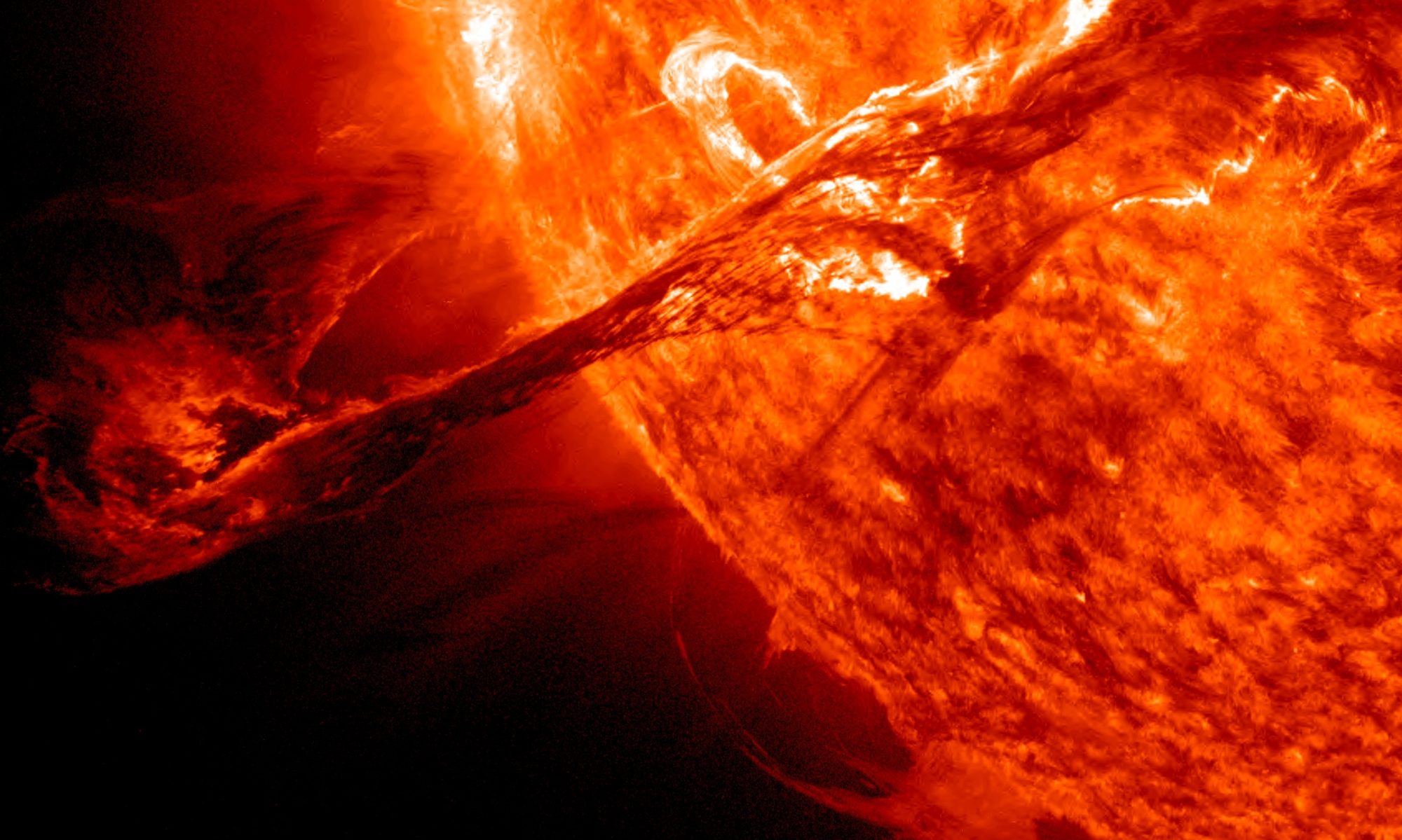It is well known that Solar System has a central star Sun and 9 planets which revolve about the Sun following Kepler’s laws.
Kepler’s laws of planetary motion are three scientific laws describing the motion of planets around the Sun, published by Johannes Kepler between 1609 and 1619. These advanced the heliocentric theory of Nicolaus Copernicus, replacing its circular orbits with epicycles with elliptical trajectories, and explaining how planetary velocities vary.[1]
The laws state that:

Figure 1: Illustration of Kepler’s three laws with two planetary orbits.
- The orbit of a planet is an ellipse with the Sun at one of the two foci.
- A line segment joining a planet and the Sun sweeps out equal areas during equal intervals of time.[2]
- The square of the orbital period of a planet is directly proportional to the cube of the semi-major axis of its orbit.
The elliptical orbits of planets were indicated by calculations of the orbit of Mars.[3] From this, Kepler inferred that other bodies in the Solar System, including those farther away from the Sun, also have elliptical orbits. The second law helps to establish that when a planet is closer to the Sun, it travels faster. The third law expresses that the farther a planet is from the Sun, the longer its orbit, and vice versa.
Isaac Newton showed in 1687 that relationships like Kepler’s would apply in the Solar System to a good approximation, as a consequence of his own laws of motion and law of universal gravitation.
Solar inertial motion is induced by the gravitational feedback of the planets of the Solar system on the Sun.
